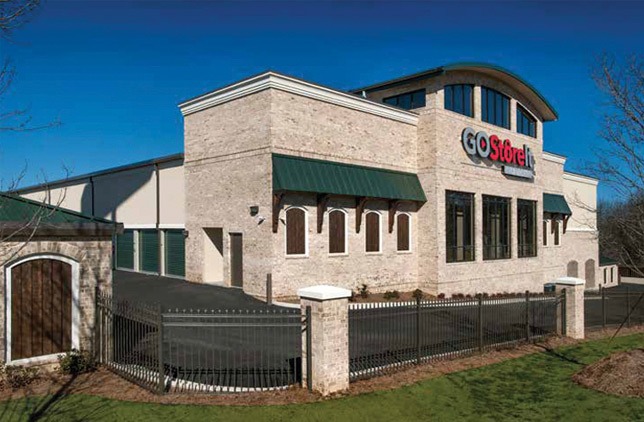The Basics of 1031 Exchanges in Oregon
1031 Exchange Replacement Property Overview
Whenever you sell business or investment property and you have a gain, you generally have to pay tax on the gain at the time of sale. IRC Section 1031 provides an exception and allows you to postpone paying tax on the gain if you reinvest the proceeds in similar property as part of a qualifying like-kind exchange. Gain deferred in a like-kind exchange under IRC Section 1031 is tax-deferred, but it is not tax-free.
1031 exchange investments can include like-kind property exclusively or it can include like-kind property along with cash, liabilities and property that are not like-kind. If you receive cash, relief from debt, or property that is not like-kind, however, you may trigger some taxable gain in the year of the exchange. There can be both deferred and recognized gain in the same transaction when a taxpayer exchanges for like-kind property of lesser value.
Contact a Corcapa 1031 Advisor for more information 1031 Exchanges in the form of TIC Properties and DST Properties.
Receive a Free Initial Consultation from a Qualified 1031 Advisor
Want to learn more about the 1031 Exchange Process and how to defer capital gains taxes with a 1031 Exchange? Contact us for experienced guidance.
What You Need to Know About 1031 Exchanges in Oregon
Learn more about 1031 Exchange guidelines and common 1031 Exchange questions.
1031 Exchange Qualifications
Owners of investment and business property may qualify for a Section 1031 deferral. Individuals, C corporations, S corporations, partnerships (general or limited), limited liability companies, trusts and any other taxpaying entity may set up an exchange of business or investment properties for business or investment properties under Section 1031.
1031 Exchange Structures
To accomplish a Section 1031 exchange, there must be an exchange of properties. The simplest type of Section 1031 exchange is a simultaneous swap of one property for another.
Deferred exchanges are more complex but allow flexibility. They allow you to dispose of property and subsequently acquire one or more other like-kind replacement properties.
To qualify as a Section 1031 exchange, a deferred exchange must be distinguished from the case of a taxpayer simply selling one property and using the proceeds to purchase another property (which is a taxable transaction). Rather, in a deferred exchange, the disposition of the relinquished property and acquisition of the replacement property must be mutually dependent parts of an integrated transaction constituting an exchange of property. Taxpayers engaging in deferred exchanges generally use exchange facilitators under exchange agreements pursuant to rules provided in the Income Tax Regulations.
A reverse exchange is somewhat more complex than a deferred exchange. It involves the acquisition of replacement property through an exchange accommodation titleholder, with whom it is parked for no more than 180 days. During this parking period the taxpayer disposes of its relinquished property to close the exchange.
Qualified Properties of a 1031 Exchange
The property you sell and the replacement property you purchange must meet certain requirements to qualify for a 1031 Exchange. Both properties must be held for use in a trade or business or for investment. Both properties must be similar enough to qualify as “Like-Kind.”
Property types that are considered to be “Like-Kind” properties and are eligible for 1031 exchange are:
- Delaware Statutory Trusts (DST)
- Tenants in Common (TIC)
- Agricultural – Farm, Ranch, Land
- Residential Property
- Commercial Property
- Oil and Gas
1031 Exchange Time Limits
While a like-kind exchange does not have to be a simultaneous swap of properties, you must meet two time limits or the entire gain will be taxable. These limits cannot be extended for any circumstance or hardship except in the case of presidentially declared disasters.
The first limit is that you have 45 days from the date you sell the relinquished property to identify potential replacement properties. The identification must be in writing, signed by you and delivered to a person involved in the exchange like the seller of the replacement property or the qualified intermediary. However, notice to your attorney, real estate agent, accountant or similar persons acting as your agent is not sufficient.
Replacement properties must be clearly described in the written identification. In the case of real estate, this means a legal description, street address or distinguishable name. Follow the IRS guidelines for the maximum number and value of properties that can be identified.
The second limit is that the replacement property must be received and the exchange completed no later than 180 days after the sale of the exchanged property or the due date (with extensions) of the income tax return for the tax year in which the relinquished property was sold, whichever is earlier. The replacement property received must be substantially the same as property identified within the 45-day limit described above.
Request Current 1031 Exchange Property Listings
Browse replacement property offerings for your 1031 exchange.

REGISTER
Prospective Oregon clients can register to receive current 1031 Exchange property listings.

BROWSE PROPERTIES
Once approved, you can login anytime and view current 1031 Exchange replacement properties.

1031 ADVISOR GUIDANCE
Our qualified team will provide guidance and make recommendations based on your goals.
What Property Types Qualify for a 1031 Exchange in Oregon?
Oregon Like-Kind Exchanges
Land, land improvements resulting from human effort including buildings and machinery sited on land and various property rights over the preceding (ex. homes, apartment buildings, shopping centers, commercial buildings, factories, condominiums, leases of 30-years or more, quarries and oil fields.) All types of real property are considered like-kind and thus exchangeable for all other types of real property in a 1031 exchange.
What is a like-kind exchange?
A like-kind exchange is a tax-deferred transaction that allows for the disposal of an asset and the acquisition of another similar asset without generating a capital gains tax liability from the sale of the first asset.

Delaware Statutory Trusts (DSTs)
Investors can 1031 exchange from traditional property into DSTs of any type of asset class such as multifamily or self-storage.

Tenants in Common (TICs)
Investors can 1031 exchange into TIC ownership of properties in a variety of asset classes such as self-storage, Amazon or Costco tenanted industrial facilities, or even senior care facilities.

Commercial
Investors can 1031 exchange into commercial properties such as industrial and manufacturing facilities like an Amazon Distribution Facility, a self-storage facility, a retail shopping center, or an office building.

Residential
Investors can 1031 exchange into residential multifamily properties such as 300-unit class A luxury multifamily facilities, 55+ active living communities, or student housing properties.

Agriculture
Investors can 1031 exchange from farmland into residential multifamily properties or the reverse, where farm owners can sell farmland and reinvest proceeds into residential multifamily communities.

Oil and Gas
Investors can 1031 exchange from traditional property into oil and gas investments as working interests or royalty interests. We have had clients sell inherited royalty interest owned for decades and reinvest in income-producing multifamily properties.
Oregon 1031 Exchange Real Estate FAQs
Learn more about the 1031 Exchange process and common questions about 1031 Exchanges.
A 1031 Exchange is a transaction in which a taxpayer is allowed to exchange one investment property for another by deferring the tax consequence of a sale. The transaction is authorized by 1031 of the IRS Code.
Contact a Corcapa 1031 Advisor for more information 1031 Exchange process and if it is right for you.
How do I complete a 1031 Exchange?
To accomplish a full tax deferral on the sale of rental property you must follow the IRS Section 1031 Guidelines. Corcapa 1031 Advisors recommends the following:
- Be in communication with your Corcapa 1031 Advisors representative well ahead of your proposed relinquished property sale closing date so we can begin to research and identify potential replacement property.
- Be sure to select and assign a Qualified Intermediary “QI” or Accommodator to receive the sale proceeds from escrow. Corcapa can recommend QIs for you. Be sure to research the financial backing of QIs before selecting them. Be especially careful to NOT take personal receipt of the funds or your exchange will be invalidated.
- From the day you close your relinquished property, you will have 45 days to identify your replacement property(ies). This identification must be in writing, and can follow one of three possible identification rules:
- 3-property rule: Up to three properties are identified no matter what their value.
- 200 percent rule: Any number of properties is identified as long as their combined fair market value (FMV) does not exceed 200% of the FMV of the relinquished properties.
- 95 percent rule: Any number of properties are identified no matter what the aggregate FMV, provided 95% of the value of the identified properties is acquired.
- The investor must close on the identified replacement property(s) within 180 days from the close date of the relinquished property. This is an additional 135 days from the end of the 45 day period in which to close on your replacement property(ies).
- Additionally, for full tax deferral you must purchase equal or greater purchase price, equal or greater debt and reinvest all cash.
- Please review the IRS publication here for further details: http://www.irs.gov/uac/Like-Kind-Exchanges-Under-IRC-Code-Section-1031
Are you an Accommodator?
While Corcapa is happy to refer you to accommodators, we cannot provide accommodator/Qualified Intermediary services. We specialize in the replacement properties for our clients’ 1031 exchanges.
What is a DST?
A DST is an acronym for a Delaware Statutory Trust which is fractional ownership of real estate. In 2004 the IRS issued a Revenue Ruling clarifying the terms on structuring a DST investment for 1031 purposes. Please review the IRS Revenue Ruling 2004-86
Will a DST or TIC Qualify for a 1031 Exchange?
The Revenue Ruling 2004-86 issued by the IRS governs how the DST should be structured so that the real estate program is likely to fit within the guidelines of a 1031 exchange. TICs have a Revenue Procedure 2002-22 that discusses the 15 structure points TIC programs should have in order to receive a “should level” tax opinion. Corcapa works with sponsors of DST and TIC offerings who structure the offerings with a legal opinion from experienced industry attorneys for 1031 exchange purchases. We recommend that you discuss this with your tax and legal advisors and we will provide all documentation to these advisors to use in analyzing your replacement property options.
How quickly can I close escrow on my DST?
This depends on the velocity of the real estate market. Currently there is a significant upswing in 1031 exchange activity and also an upswing in the purchase of DST properties. More attractive DST offerings can sell out quickly so its important to alert you Corcapa representative early on and let them know you have a pending 1031 exchange. This way we can be very proactive in finding the replacement properties that fit you needs.
Most clients prefer to have a closing on their replacement properties sooner so as to begin earning income. Its possible to have a closing on your DST within three to ten business days. Alternatively, clients may prefer to wait a few weeks to close escrow on their replacement property and this can easily be arranged.
One advantage of closing escrow sooner on your DST purchase is that the cash flow begins to accumulate immediately after closing and is paid with the first distribution the following month.
Do I still receive traditional real estate depreciation on the income?
Yes, DST ownership is similar to traditional real estate ownership and the year-end tax reporting will detail your share of the depreciation expenses.
When does the cash flow start? How frequently will I be paid?
Projected cash flow begins the very next month after investment. For example, if you close on your DST purchase on August 15th, you will typically receive a distribution on September 15th for all the days you were invested in August. The October distribution would be a full month distribution for all of September and so forth. Investors can elect to receive the distributions via direct deposit or a mailed check, although almost all investors choose direct deposit. A projected cash flow of a 1031 property is not a certain or guaranteed payment and payment is not assured.
How frequently will I receive reporting on my DST?
The DST sponsor will provide you quarterly reporting delivered either electronically or via mail. There is a comprehensive year-end report provided which also gives you the tax reporting information you would provide to your accountant to complete your taxes.
Why do investors Choose DSTs or TICs for 1031 Exchange Property?
The most common reasons that investors select DSTs are:
- Potentially Greater Cash Flow Than They Are Currently Receiving: Most DSTs have between a 4.00% – 5.50% projected cash flow based on the anticipated rental income less expenses. For example, if you invest $1,000,000 of equity into a DST with a 4.5% projected cash flow, this would provide a projected net annual income of $45,000. This could be a higher net cash flow than you are currently receiving on your rental property. As with all real estate the income cannot be guaranteed because the rental income and expenses can increase or decrease unexpectedly.
- Ability to Diversify: You can reinvest your relinquished property sale proceeds into multiple investments in different cities, states, and asset classes such as apartments and net lease retail.
- Non-Recourse Loans: Virtually all the loans within the DSTs that are approved by DAI Securities, LLC are non-recourse which means the investor does not personally guarantee them.
- Easier Financing: Access to financing for investors needing debt on their replacement property
- Passive Ownership Structure: Many investors desire to reduce their active property management as they grow older and DSTs offer passive ownership.
We recommend that all clients review each PPM in detail and consult their tax and legal advisors to full understand the benefits and risks of the investment. Corcapa 1031 Advisors is happy to attend a meeting with your tax and legal advisors or have a conference call to answer all questions.
What is LTV or Loan To Value?
LTV is Loan To Value – which means the amount of loan associated with the property. If a property is 50% loan to value (also called 50% leveraged) this means there is a 50% cash down payment and a 50% loan associated with the property. DST loans are non-recourse which means investors are not required to provide personal guarantees. Debt adds risk to any property but the newly assumed non-recourse debt may add to your depreciation basis, which may shelter a significant amount of cash flow from taxation.
How Do You Compute Basis?
Basis from the relinquished (sold) property to the replacement (new) property must be carefully tracked and calculated by your tax professional to ensure a successful 1031 exchange.
In 1031 exchange your gain is deferred until a sale occurs or there is a step up in basis.
A very simple basis can look something like this: the price you paid for the property, less depreciation claimed over the years of ownership, plus any improvements to the property, plus any additional adjustments.
One way to garner additional depreciable basis, and subsequently shelter to cash flow, is to acquire debt with leveraged DSTs. This debt brings risk that would not occur in an all cash property but the benefit is the potential shelter of income.
When the new replacement property is sold in the future (assuming no further 1031 exchange), the original deferred gain, plus any additional gain realized since the purchase of the replacement property, is subject to tax.
How do you report Section 1031 Like-Kind Exchanges to the IRS?
You must report an exchange to the IRS on Form 8824, Like-Kind Exchanges and file it with your tax return for the year in which the exchange occurred.
Form 8824 asks for:
- Descriptions of the properties exchanged
- Dates that properties were identified and transferred
- Any relationship between the parties to the exchange
- Value of the like-kind and other property received
- Gain or loss on sale of other (non-like-kind) property given up
- Cash received or paid; liabilities relieved or assumed
- Adjusted basis of like-kind property given up; realized gain
If you do not specifically follow the rules for like-kind exchanges, you may be held liable for taxes, penalties, and interest on your transactions.
Is there a loan on my property?
Most of the DSTs have loans associated with the properties to help the clients meet the debt needs of their relinquished property. These loans are typically Non-Recourse which means the investor does not sign off on guarantees of the loan. The Lender makes a loan to the Trust, who is the sole borrower. If the Trust should ever default on the loan, the only liability is your initial investment.
We also have no debt – all cash – properties for investors who do not have debt to replace on their exchange or who simply choose to maintain an all cash DST ownership.
What is the Fee Structure?
Each offering has a detailed Private Placement Memorandum (PPM) to review which clearly explains the fee structure. Every offering is slightly different, but you can review the specific fees which are generally found in the Estimated Use of Proceeds table. You do not pay an outside check or fee to Corcapa upon purchase. Should you choose to buy a DST offering through Corcapa the sponsor pays us a commission based on the equity you invest. Fees are paid by the buyer, so most offerings are marked up approximately 6-10% to cover the expenses of the transaction. Despite these fees, if the projected cash flow is 4.5% on a $1,000,000 equity investment, the annual income is anticipated to be $45,000.
What is Corcapa? What is DAI Securities, LLC?
Corcapa 1031 Advisors is a Finra www.finra.org registered branch office located in Costa Mesa, CA. Securities offered through DAI Securities, LLC, member FINRA/SIPC.
* All information provided on this page is time sensitive and subject to change
Oregon 1031 Exchange Advisor Services
With over a decade of experience specializing in 1031 Exchange Replacement Property, we help clients in Oregon and nationwide meet their investment objectives.
- We Have Hundreds Of Successful 1031 Exchanges
- We Provice A Free Real Estate Portfolio Analysis
- We Provide A Free Initial Consultation and Proposal
- We Provide Current 1031 Exchange Property Listings
- Non Recourse Loans -- Can Close In 3 Days
- We Have Dozens of Client Referrals
Request Current 1031 Exchange Property Listings
Browse replacement property offerings for your 1031 exchange.

Register
Prospective Oregon clients can register to receive current 1031 Exchange property listings.

Browse Properties
Once approved, you can login anytime and view current 1031 Exchange replacement properties.

1031 Advisor Guidance
Our qualified team will provide guidance and make recommendations based on your goals.

